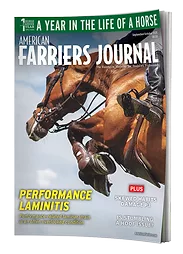Advertise Follow Us
Articles Tagged with ''therapeutic''
If used properly, weld inserts can provide a farrier with an additional tool when therapeutic needs arise
Read More
A Step-By-Step Process for Improving Stud Holes
By following these instructions, you can increase the reliability of stud holes for your clients using aluminum shoes
Read More
Farrier Q&A: May/June 2016
What are your criteria for selecting a pad to put on a horse? What type of pad and why?
Read More
Getting Better Results With Hospital Plates
Various insights on using hospital plates can help improve your chances for success when the need arises
Read More
Research Journal: March 2016
The information, ideas and opinions expressed are those of the author and do not necessarily represent those of the United States Department of Agriculture.
Read More
Think Before You Wedge Those Heels
Without proper supporting structures, you may cause further damage to the palmar aspect of the foot you’re trying to help
Read More
In Defense Of Shoes
The six winners of the Mustad’s scholarship essay contest describe why horses should be shod
Read More
Book Notes
Therapeutic Shoeing Given the Spotlight
A Manual for Veterinarians and Farriers
Read More
Grooving The Hoof For Founder
For more than 20 years, grooving has helped this farrier overcome serious founder concerns
Read More
Double-Barreled Shoeing Advice
Troublesome Situations
Two views on handling those tricky client concerns
Read More









